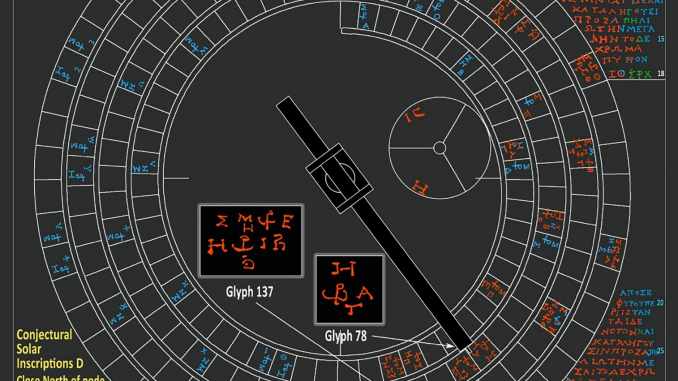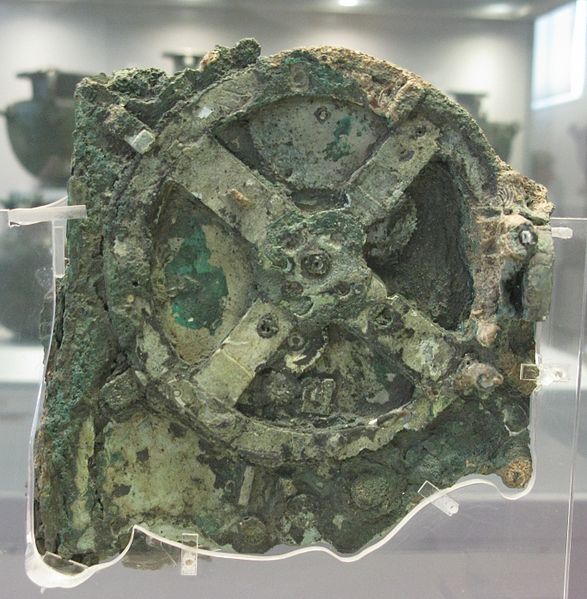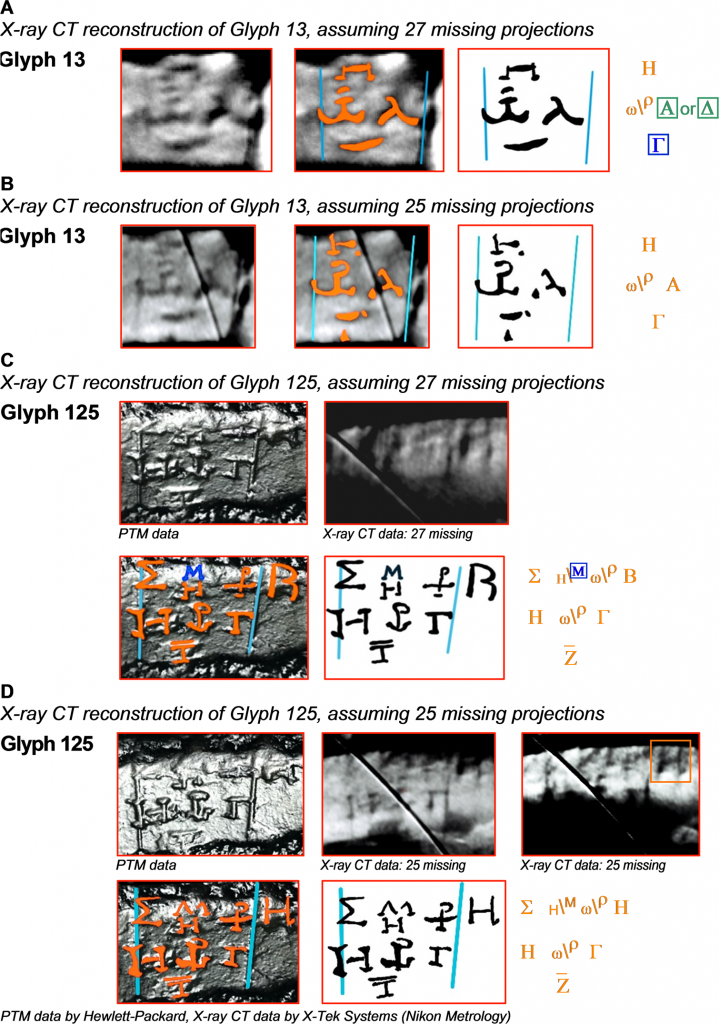
Found in 1902 by archaeologist Valerios Stais, the Antikythera mechanism is an analog computer fashioned by early Greek scientists probably around 87 BCE but perhaps as early as 205 BCE.

They used the device to predict astronomical positions and eclipses. It was a little over 1 foot long, half that wide, and less than 4 inches deep, and it was housed in a box just large enough to contain it. The largest gear has 223 teeth and it appears to have at least 30 gears in all.
It was named after the Greek island, Antikythera, where it was found off-shore in nearly 150 feet of water on a wreck that was found by sponge divers in 1900.
Recently, several news items were passed about the internet, particularly on Facebook, that stated divers had recently recovered another piece of the mechanism after diving on the original wreck location. Unfortunately, this turned out to be just hype and inaccurately or hastily reported information. The item retrieved turned out not to be a gear as originally thought by some.
There is, however, some recent news about the Antikythera mechanism that’s worth sharing. And that is to say, researchers have reanalyzed X-rays of the mechanism which initially done in 2005.
These x-ray tomography images are among the best done to date and show improved in contrast as well as resolution, which give better clarity and legibility. That last part–legibility–might be the important bit.
Tony Freeth, and his team, used a prototype X-ray machine called the Bladerunner, which fired at 450 kilovolts and is the most powerful X-ray machine available during at that time. It was developed specifically with penetrating Fragment A of the Antikythera mechanism in mind!
The Bladerunner took a series of planer images as the mechanism was rotated slowly between the X-ray source and detector. These planer images, or projections, were then recorded and converted to TIFF images for analysis. This was all in 2005.

The result was that much clearer images were obtained compared to previous X-ray attempts with about 3,000 characters out of perhaps 15,000 being transcribed.
The problem they ran into was something that happens in highly technical, complex, computer aided analysis: software and hardware glitches. About 27 of 2957 projections (those “planer slices” of X-rays) just didn’t get recorded, leaving some gaps in the data.
But this year, Ashkan Pakzad, and his team, mostly from University College London (UCL), were able to go back and reanalyse the scan with the two possible causes of the data loss in mind (movement of the fragment during scanning and missing projections). In so doing, they were able to get some “modest improvements in the legibility of the text!”
Their methods used a little bit of math to interpolate a best guess for each missing projection–essentially both sides of the missing slices were evaluated and a mean value was applied to the middle.

Take the image of the letter “B” shown here. If we shred that image then collect all the strips of the image to reconstruct it, but some have gone missing, our mind can imagine where the missing bits probably are. Pakzad’s team used software to apply a statistical probability to the missing data of the Antikythera mechanism scans in order to give it a “best guess.”
Their work at reconstructing the missing data gives more clarity to many of the characters, such as glyphs 13 and 125, which refer to eclipse times. As a result, they give better estimations of the times.
The works of Freeth in 2005 then Pakzad and his team more recently highlight the importance of carefully recording and saving data. Even when you think there are errors or missing pieces, clever people can always come along and improve upon your work or discover new ways to analyze it. In archaeology, as in most disciplines, we never really know what someone might find to be “important data” in the future.
References and Further Reading
Pakzad A, Iacoviello F, Ramsey A, Speller R, Griffiths J, Freeth T, et al. (2018) Improved X-ray computed tomography reconstruction of the largest fragment of the Antikythera Mechanism, an ancient Greek astronomical calculator. PLoS ONE 13(11): e0207430. https://doi.org/10.1371/journal.pone.0207430
Freeth, Tony (2009). Decoding an Ancient Computer: Greek Technology Tracked the Heavens. Scientific American, December, 76-83.
Leave a Reply
You must be logged in to post a comment.